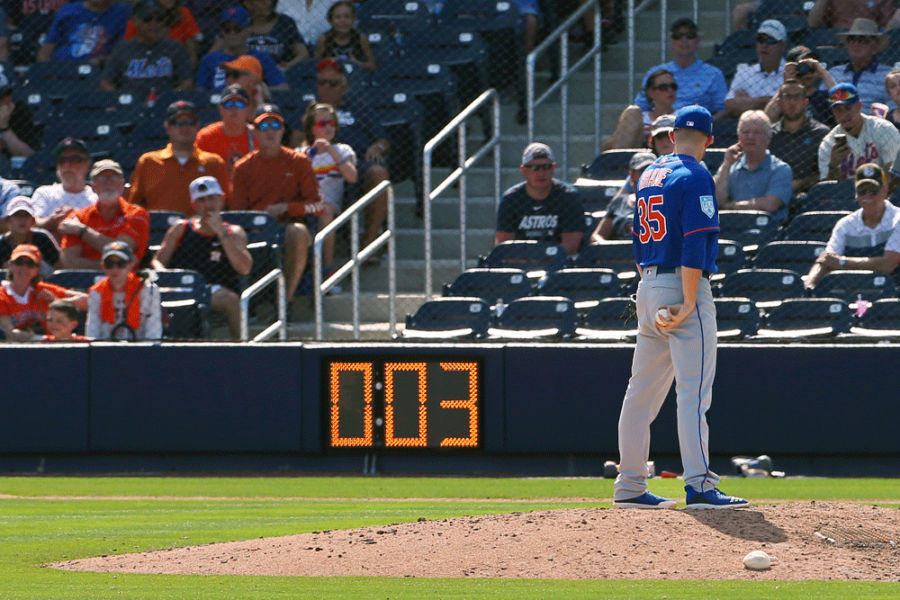MLB Rule Changes
Much like everything these days, the game of baseball is changing in hopes of making the games shorter. The game that has been around for 147 years has seen changes to modernize the game, but nothing quite like this. These changes will include a timer, shift restrictions, and bigger bases.
Let’s begin with what will have the most impact on the game, the pitch timer. While the bases are empty, this timer will be set to 15 seconds, and when there is a runner on it’s set to 20 seconds. The pitcher must deliver this pitch before the timer runs out, otherwise, it will be counted as a ball for the batter. The pitcher also only gets two pick-off attempts per batter because this resets the pitch clock. This pitch timer also applies some rules for the hitter. He must be in the box and looking at the pitcher with at least eight seconds left on the pitch timer, otherwise, it is called a strike on the batter. The most dramatic case we’ve seen of this so far in MLB Spring Training, was a case of a tie game in the 9th inning, with two outs and the bases loaded. The catcher had stood up to communicate to his infielder, which confused the Brave’s batter. The umpire had called what the brave’s hitter was sure was a violation for not getting the pitch off in time. However, the umpire called strike three on the Brave’s batter for not looking at the pitcher with eight seconds left on the clock. What a terrible way to end a great baseball game. The only real positive we’ve seen this season is that game times have been reduced by about 25 minutes on average.
Next up is the shift restrictions. When on defense, teams are only allowed to have two infielders on each side of 2nd base. This makes it so that you can’t have every single infielder on one side of the field like a wall. Also, the infielders must stay inside the dirt of the infield before the ball is hit, making it easier for hitters to get base hits to shallower parts of the outfield. Despite these rules, there has been a team that has already found a loophole in Spring Training. One of the biggest pull hitters in the league is Joey Gallo. He is one of those guys that teams would put 3-4 infielders on the first base side of the infield for. When he stepped up to the plate, the Boston Red Sox still found a way to take away his strength. They followed the rules of only 2 infielders on that side staying within the dirt of the infield, but the center fielder moved to shallow right field and the right fielder moved towards center field. It will be interesting to see how the MLB approaches changes to this rule, or if they just allow this to happen.
The final change is the size of the bases. The Bases have made the leap to 18 square inches, from 15 square inches. The league’s main goal of this change was to reduce injury and possible collision, but it also will give an advantage to baserunners. This is because the length between 1st and 2nd base, along with 2nd and 3rd base has been reduced by 4.5 inches. This gives the baserunner less of a distance to run, therefore allowing him to get there at a faster pace. Another thing that could increase because of the larger bases is infield singles. Just like a baserunner having a shorter distance to run if he’s stealing, the batter has a shorter distance to run to 1st after hitting the ball. The distance from home to 1st was also reduced by 3 inches. Base size is something that doesn’t seem like a big deal, but we could see it having a major impact throughout the season.






